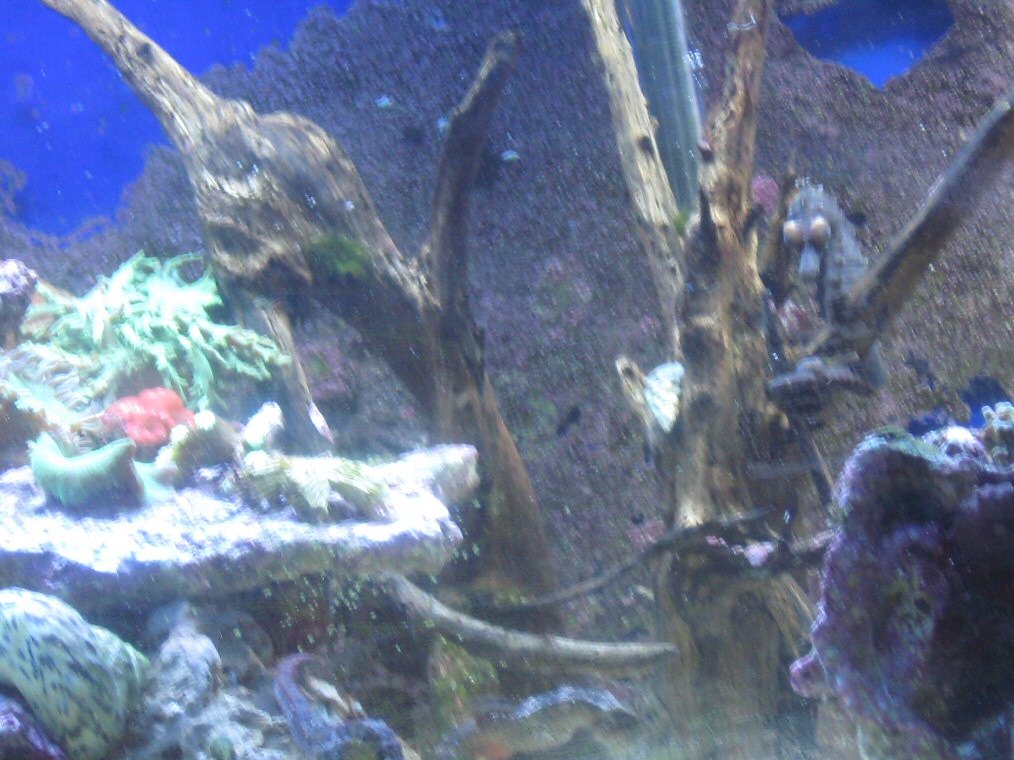big eyes?
- Thread starter leprichon
- Start date
llovsbarbie
New Member
I dont know much about it, but that looks like what most call Popeye and I dont think it is good. Sorry I cant give any advice for it.
S
saxman
Guest
It does indeed look like exophthalmus, and the fact that it's bilateral rules out injury as the cause.
You need to lower the tank temp to 68*F to arrest the bacterial growth and use a good broad-spectrum antibiotic (Maracyn 2 is the current one of choice for SH).
You need to lower the tank temp to 68*F to arrest the bacterial growth and use a good broad-spectrum antibiotic (Maracyn 2 is the current one of choice for SH).
meowzer
Moderator
OH MY....How many seahorses do you have in that tank? What size tank? What are your water parameters? What else is in the tank?
Exophthalmia ("Pop Eye")
Causes/Problems
Exophthalmia is not exactly a disease, but a stress symptom that can be brought about by many ailments. Most often, however, its cause stems from bacterial infection. Pop Eye can also be caused by parasitic or fungal infections. If the condition appears in only one eye, it may have been caused by physical injury such as being scratched by a rock.
Symptoms:
Treatment
There is no direct treatment for exophthalmia. Often all that can be done is eliminating the causative agent. Maintaining stable water conditions and feeding food medicated with an antibacterial (done in quarantine) may prove effective. Large water changes and correction of obvious water quality problems may also be useful in treating this condition.
Exophthalmia ("Pop Eye")
Causes/Problems
Exophthalmia is not exactly a disease, but a stress symptom that can be brought about by many ailments. Most often, however, its cause stems from bacterial infection. Pop Eye can also be caused by parasitic or fungal infections. If the condition appears in only one eye, it may have been caused by physical injury such as being scratched by a rock.
Symptoms:
severe protrusion of the eye from the orbital cavity
Treatment
There is no direct treatment for exophthalmia. Often all that can be done is eliminating the causative agent. Maintaining stable water conditions and feeding food medicated with an antibacterial (done in quarantine) may prove effective. Large water changes and correction of obvious water quality problems may also be useful in treating this condition.
novahobbies
Well-Known Member
A couple more points to consider. If this is a relatively new seahorse (say, less than 6 months in your tank), and purchased from your LFS, you may be looking at an underlying parasite issue. Trematodes are common parasites of wild caught and even captive bred seahorses that have been exposed to parasites in a LFS holding tank. If the eyes are CLOUDY as well as bulged, you may very well have a parasitic infestation. If so, first do a freshwater dip to verify the presence of the parasites. It will take a few minutes for the trematodes to leave the fish -- the reading I did suggests 10 minutes. If you see little white seed-shaped objects left behind in the dip water, you have just confirmed trematodes. A concentrated formalin bath is recommended if that's the case.
As everyone else has mentioned, popeye isn't really a disease in and of itself. It's a symptom of something else. Parasites, bacterial infection (though this isn't as likely),gas bubble disease, and poor water conditions all can cause popeye. A good google search for "seahorse popeye" will give you a couple general pointers in additional diagnosis and treatment options.
As everyone else has mentioned, popeye isn't really a disease in and of itself. It's a symptom of something else. Parasites, bacterial infection (though this isn't as likely),gas bubble disease, and poor water conditions all can cause popeye. A good google search for "seahorse popeye" will give you a couple general pointers in additional diagnosis and treatment options.

